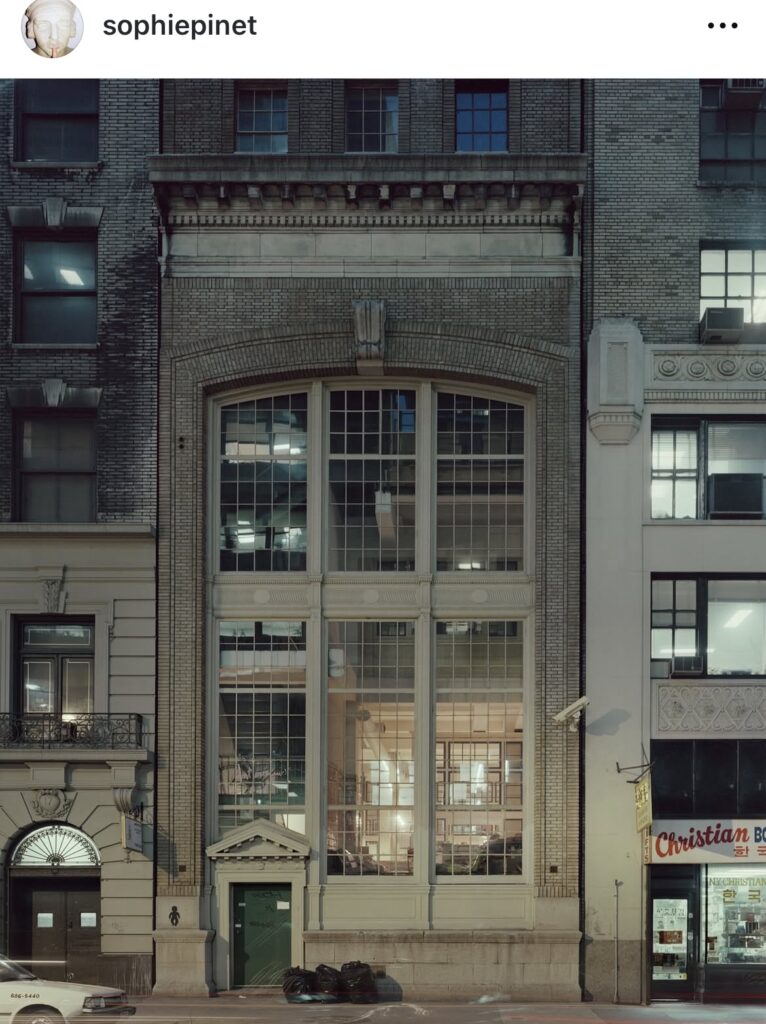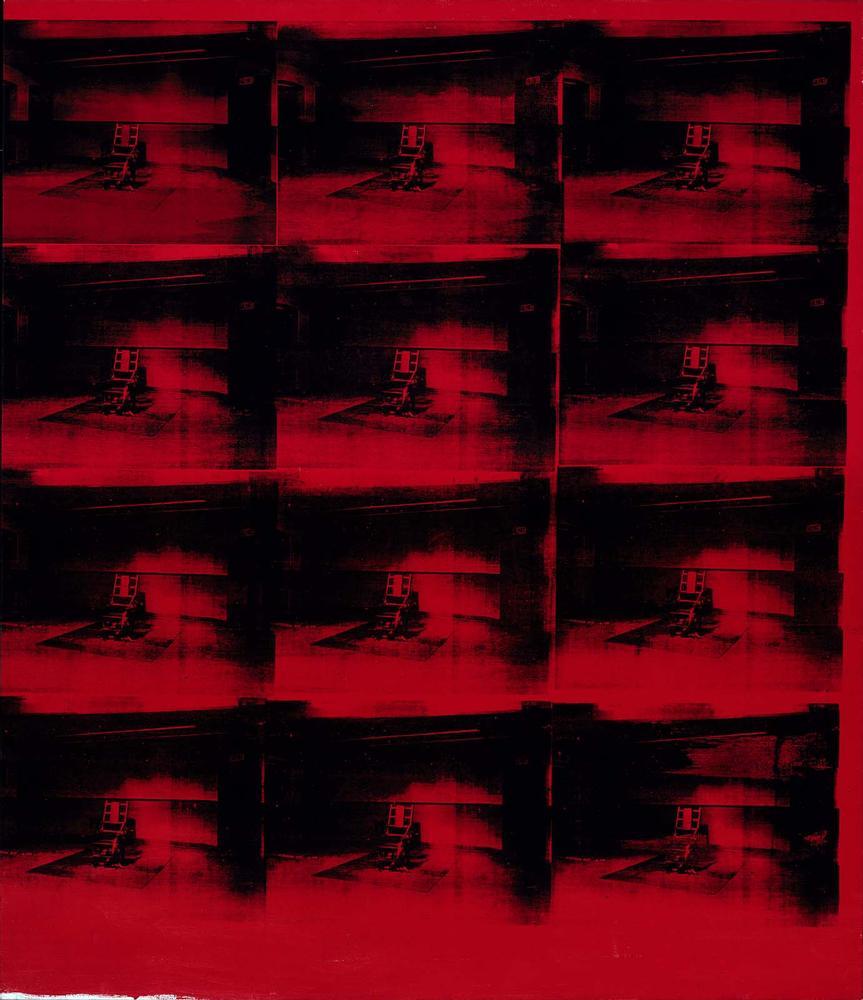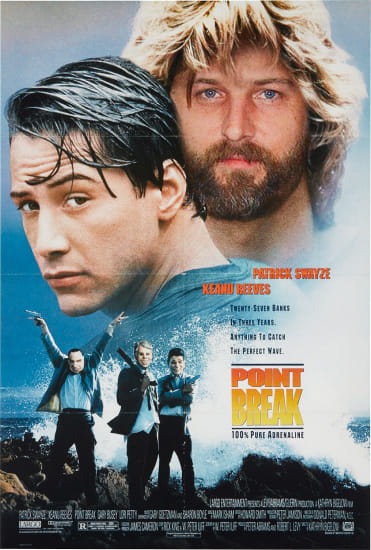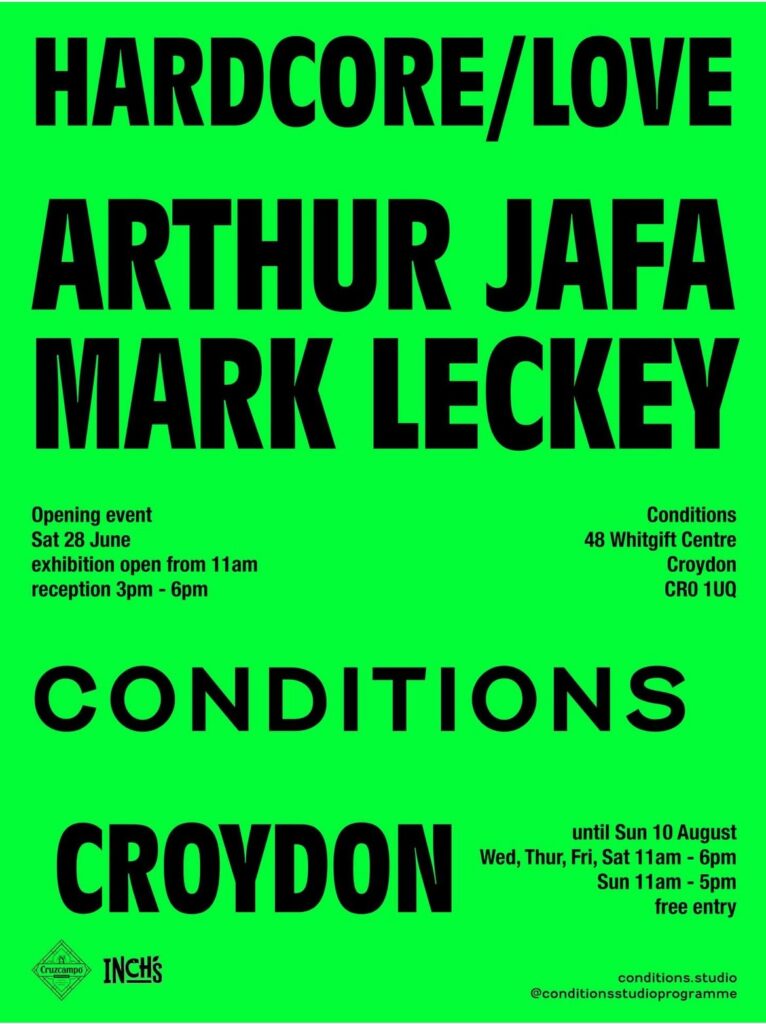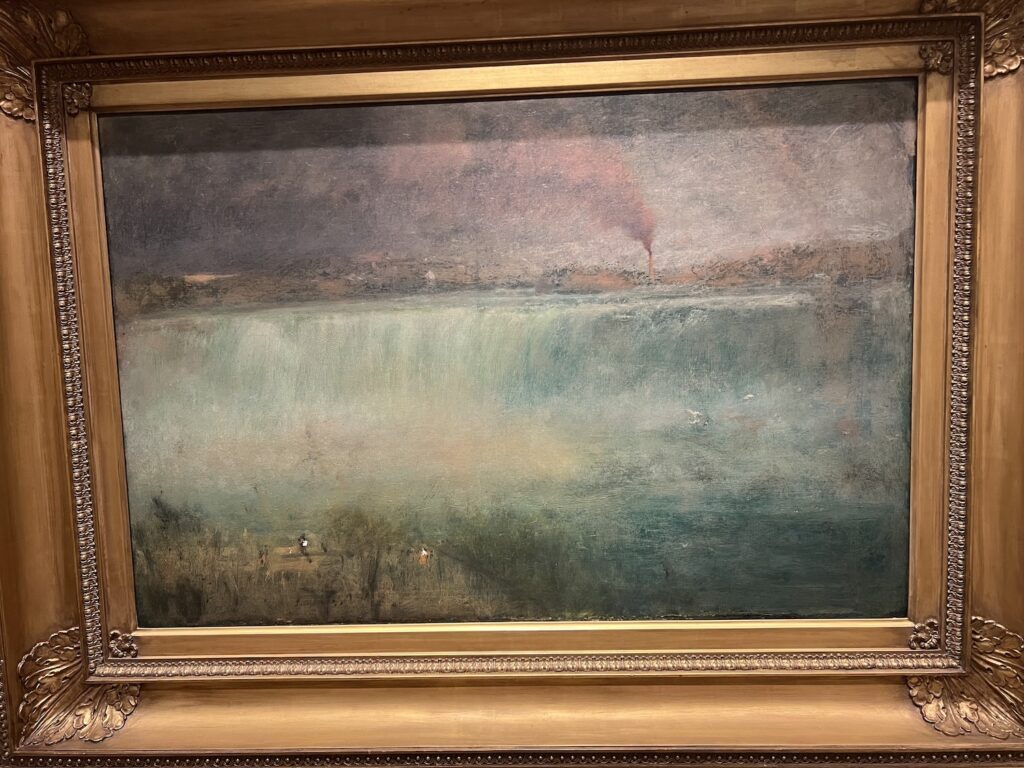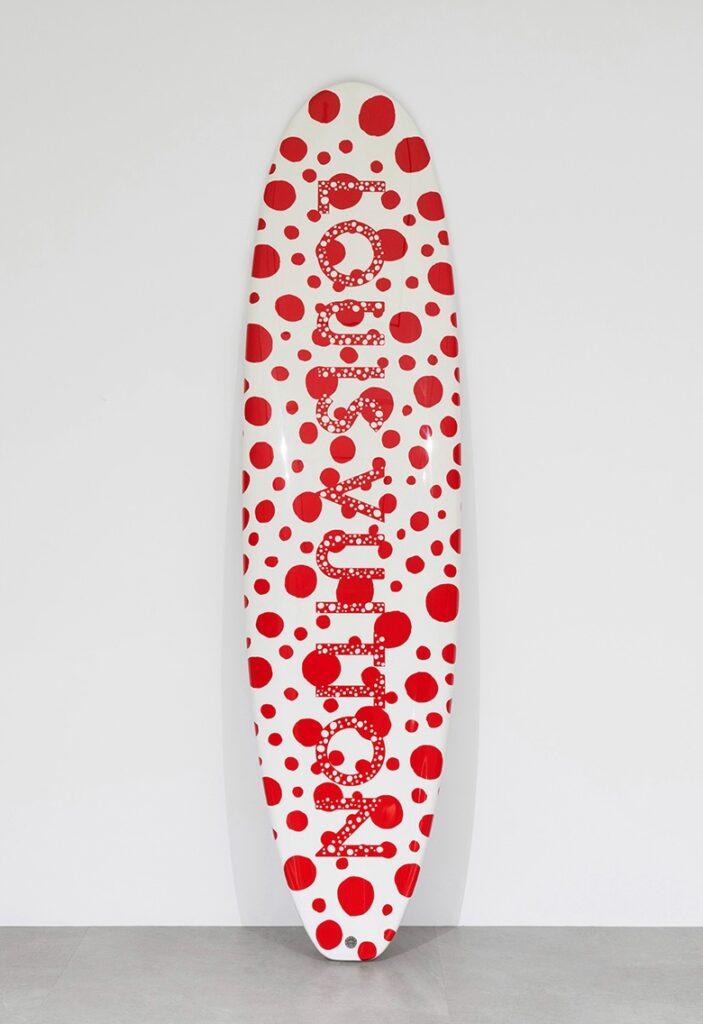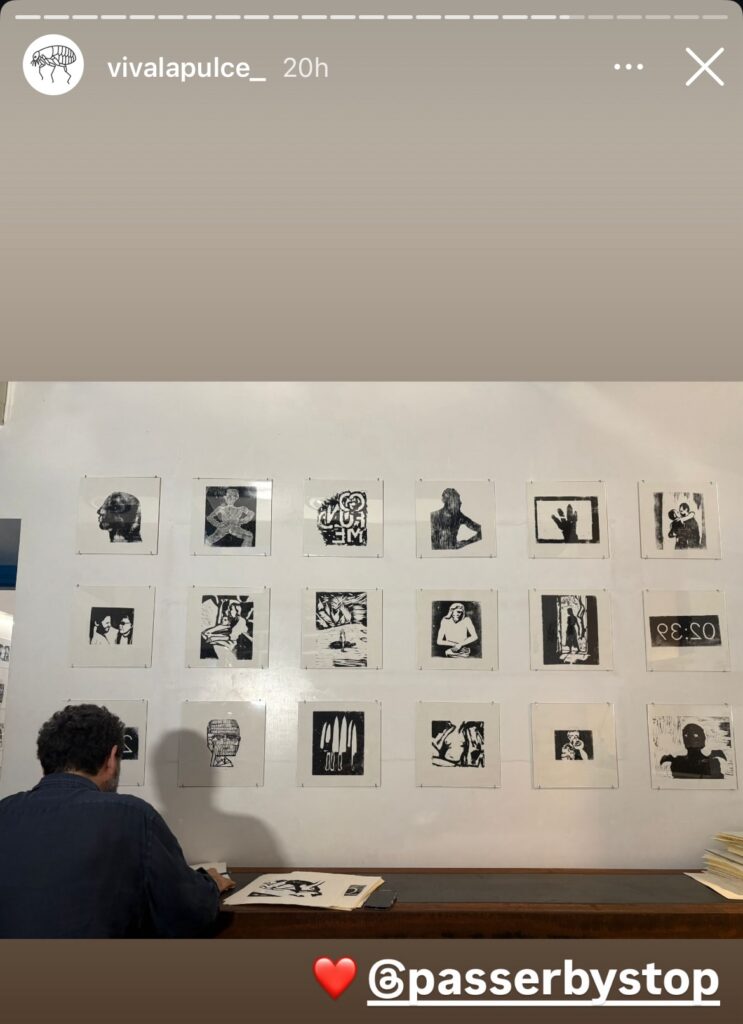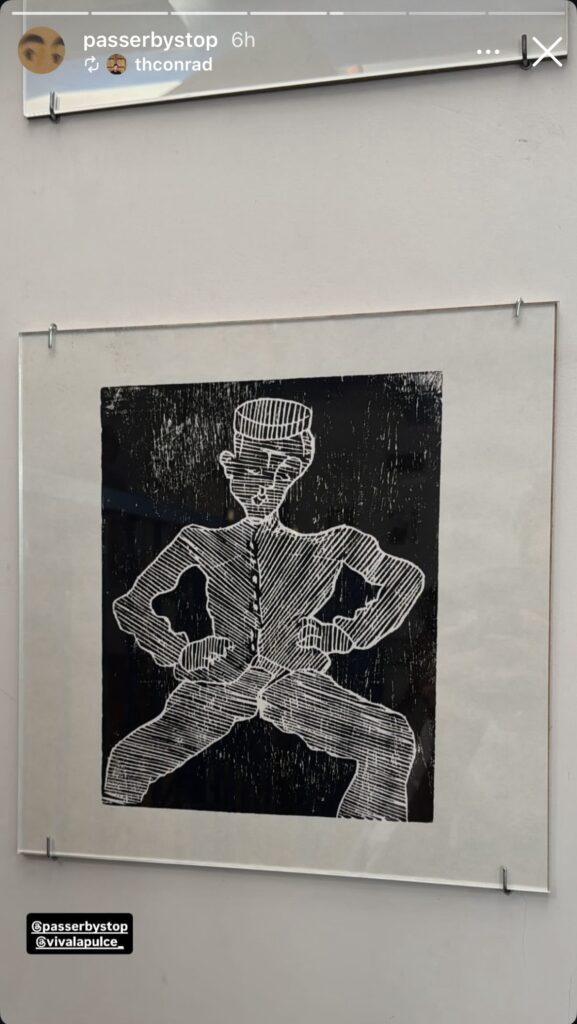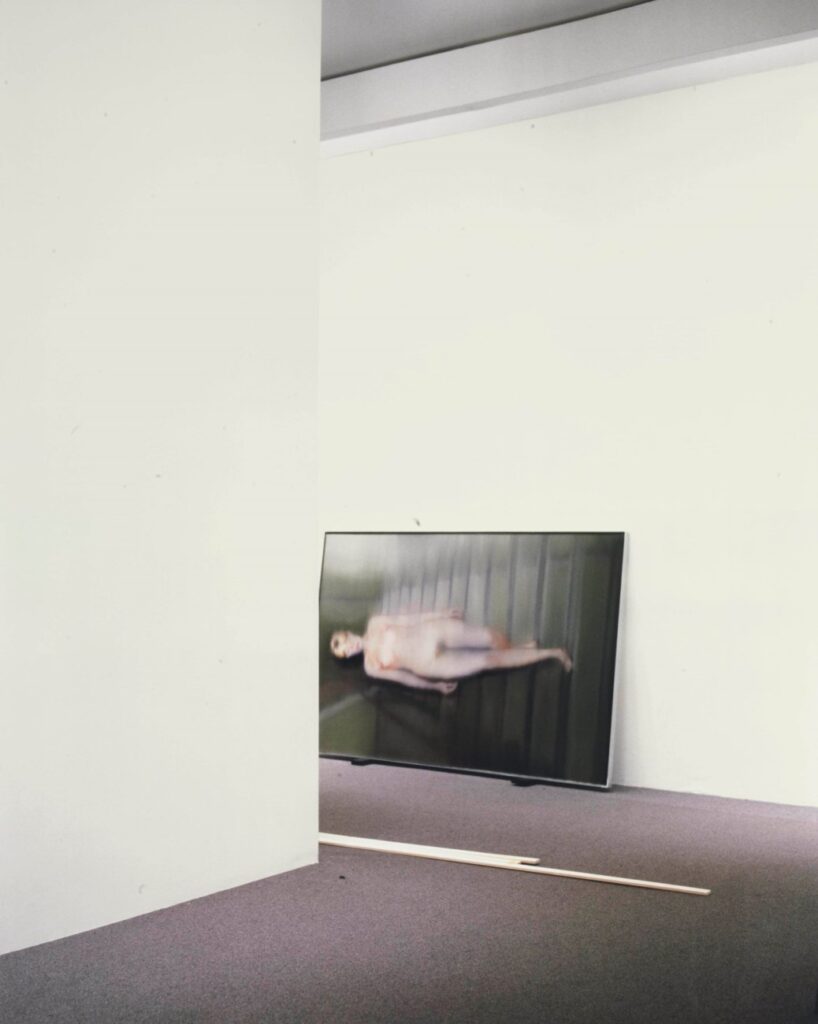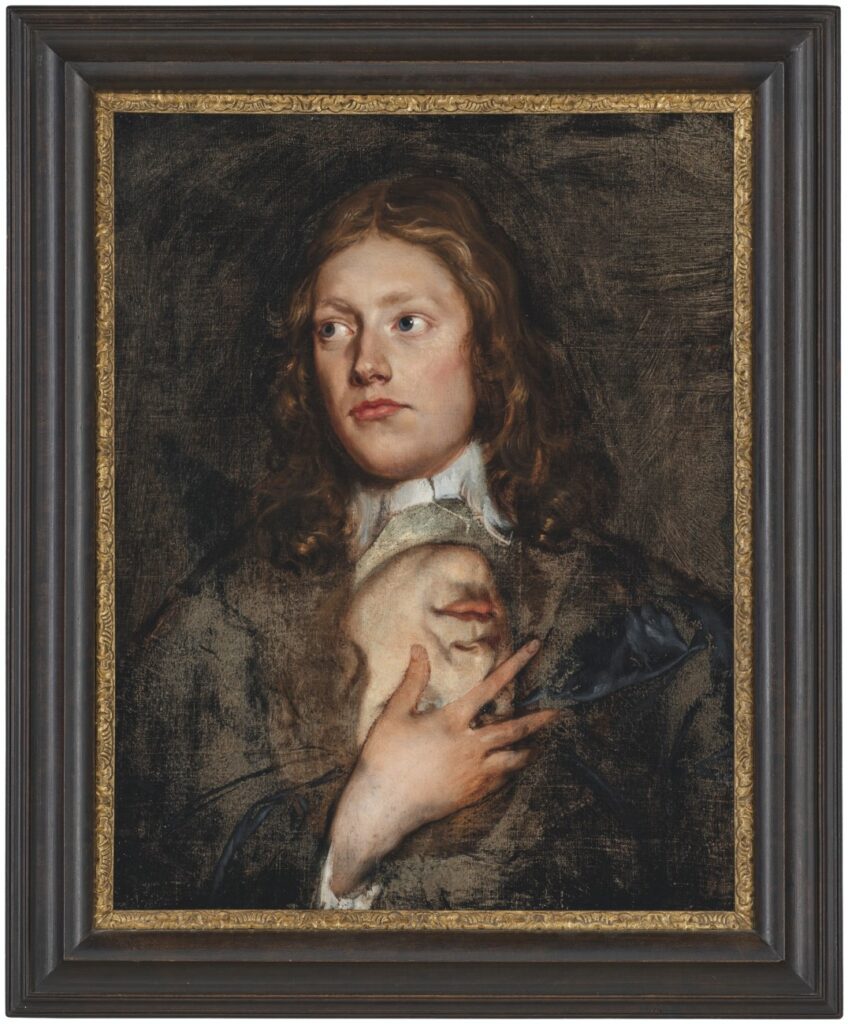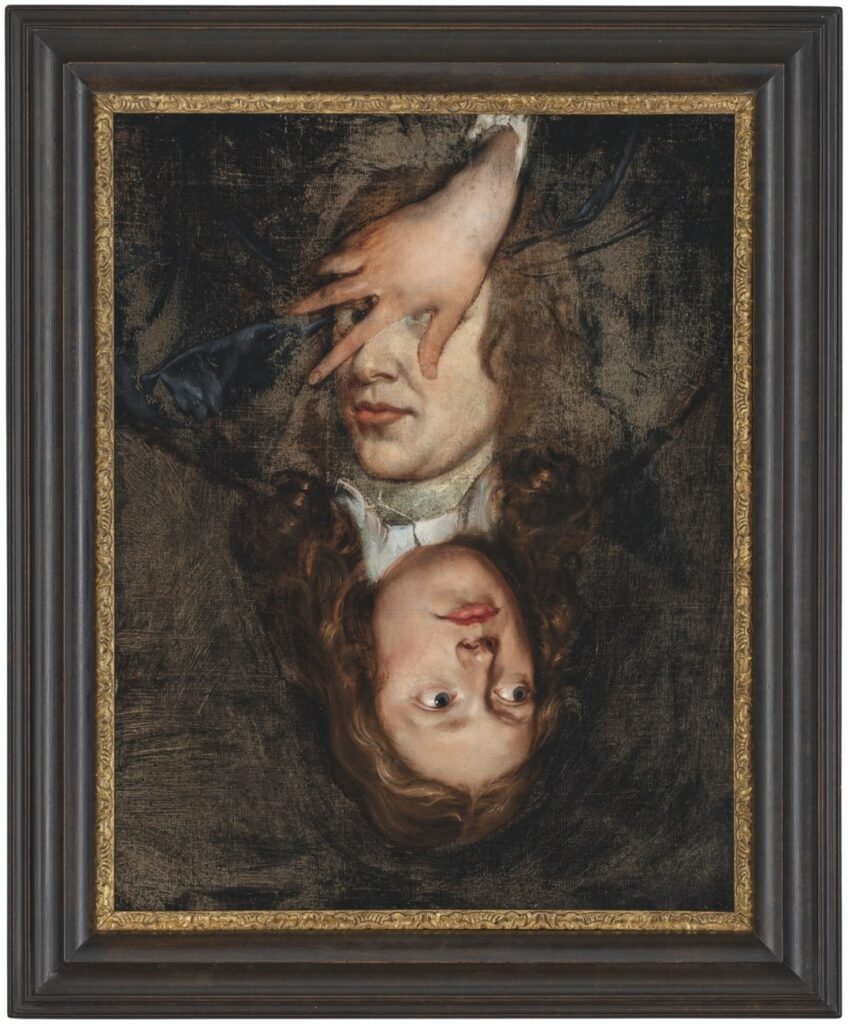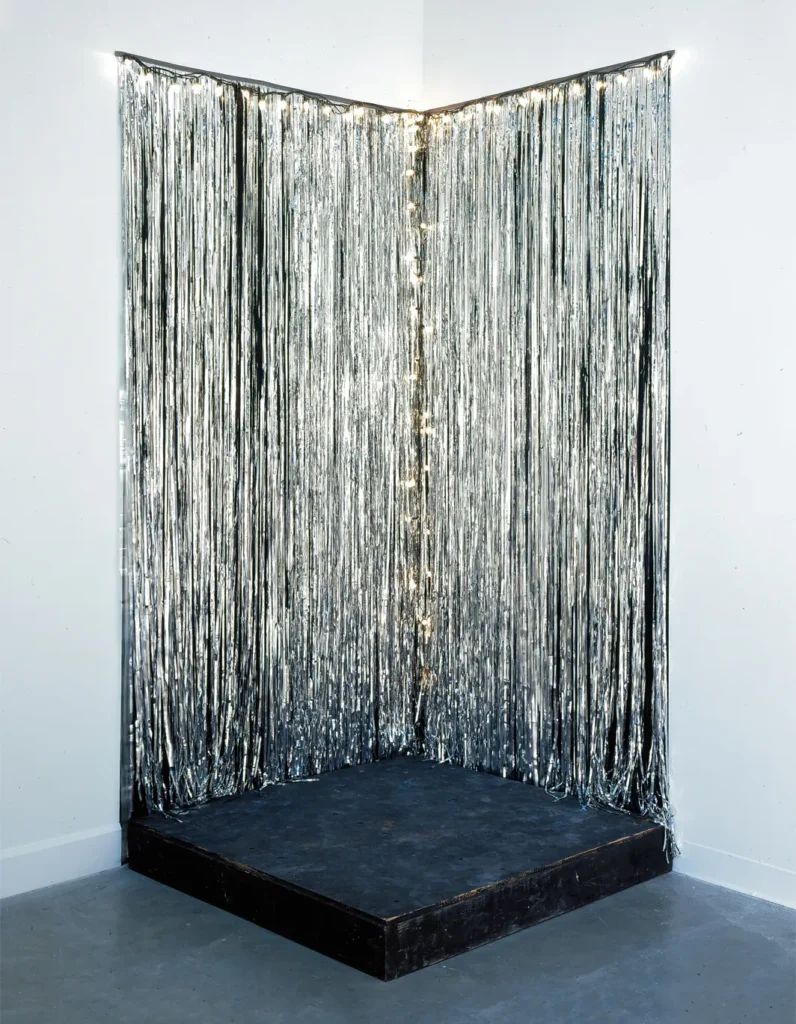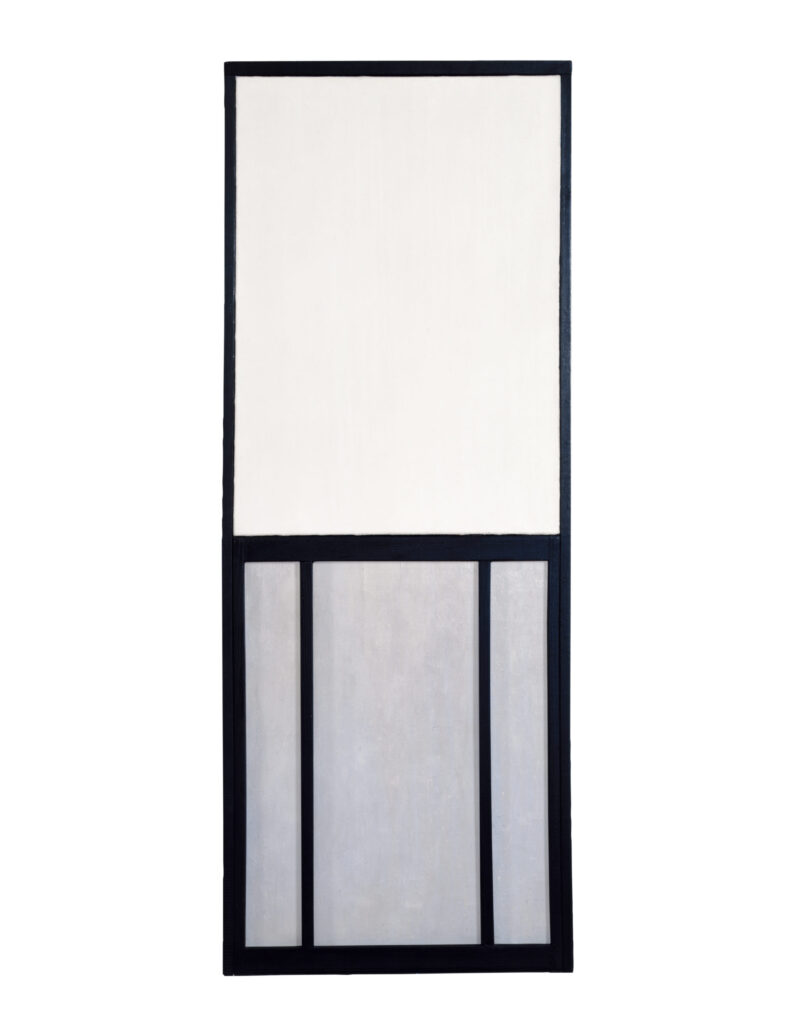
Saw this perfect, little Agnes Martin, very early, via @punk-raphaelite‘s reblog.
Along with the carefully imperfect grid built up from painted squares of canvas—one scholar calls them selvedge edges—Homage To Greece (1959) is one of a handful of works where Martin used nail heads like dots. The ones I’ve seen date from a little later; did Martin add the nails then to an earlier piece, or was this an early example? She was pretty clear in interviews that her use of the grid did not evolve, but just came to her.
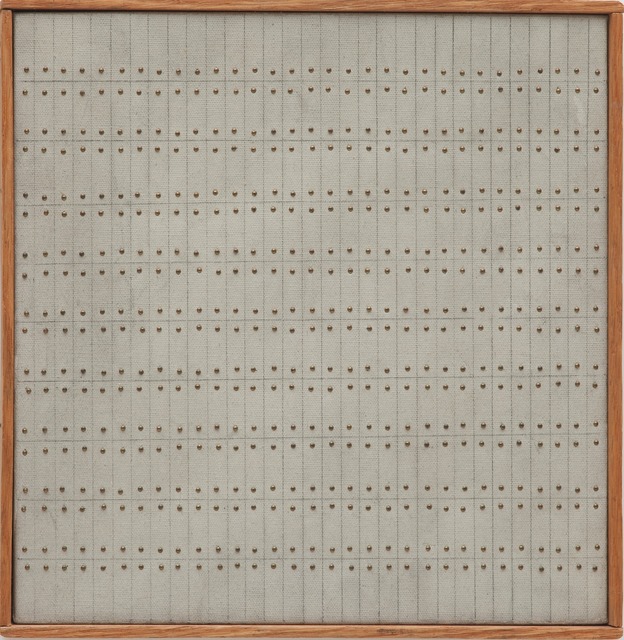
Prior to her expansion to 6-foot square canvases, Martin worked in this small, handheld size, creating not just paintings, but objects, thick with her own slat frames. One group of shallow little boxes, incised with a grid and enclosed in a plexiglass top, have little balls rolling around inside. Called The Wave, one was in a toy-themed group show once, but the others were just for friends.
Probably the friendliest among them was Lenore Tawney, who got a The Wave, and Homage to Greece—which the Tawney Foundation sold in 2011—among many other Martin works. While the two were Coenties Slipmates.
Happy Pride?
Obviously, I needed a line there that started with H.


